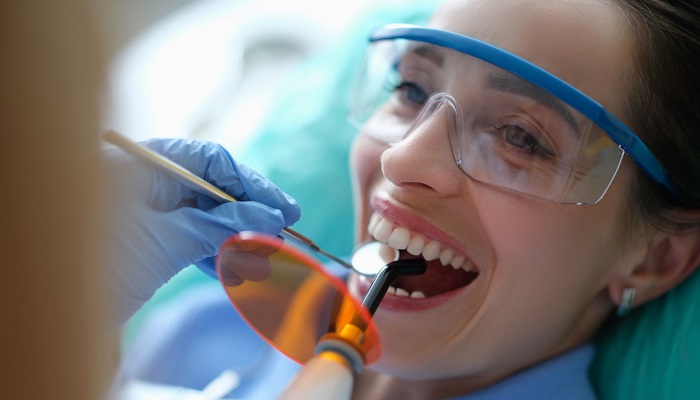Restorative dentistry is a specialized branch dedicated to diagnosing, preventing, and treating oral diseases and conditions. Its primary goal is to restore the functionality, health, and aesthetics of teeth affected by decay, trauma, or other factors. With its wide range of procedures, restorative dentistry offers numerous advantages to individuals who have experienced tooth damage or deterioration.
One of the notable benefits of restorative dentistry procedures is their ability to improve oral health by preventing further dental complications. By addressing dental issues promptly, these procedures restore the proper functionality of teeth, allowing individuals to eat and speak comfortably and without pain.
That said, this article will explore some of these procedures in detail, highlighting their benefits and potential outcomes.
1. Dental Bridges
Dental bridges offer a commonly used solution in restorative dentistry for replacing one or more missing teeth. These bridges typically consist of two or more crowns on either side of the gap, with a false tooth or teeth in between. The crowns are placed on the natural teeth or dental implants adjacent to the gap, providing support, while the false tooth or teeth are securely anchored between them.
Furthermore, bridges are popular among patients seeking to restore their smiles and improve their ability to chew and speak effectively. Plus, they serve as an excellent option for individuals who are not suitable candidates for dental implants or prefer a more affordable alternative.
So, if you’re missing one or more teeth and are interested in learning more about dental bridges, check out a reliable provider of restorative dental procedures in your location, such as Babin Dentistry, to determine if a dental bridge is the right choice for you.
2. Dental Implants
Dental implants are also a popular and effective way to replace missing teeth. These implants are artificial tooth roots made of titanium surgically placed into the jawbone. Once securely implanted, a crown or bridge can be attached to restore the appearance and functionality of the missing tooth or teeth.
One of the primary benefits of dental implants is their ability to mimic the look and feel of natural teeth closely. They’re also durable and can last for many years with proper care. In addition, dental implants may help prevent bone loss in the jaw, which can occur when teeth are missing.
While dental implants are generally considered safe and effective, they may not be suitable for everyone. Factors such as overall health, oral health, and bone density are crucial in determining whether a person is a good candidate for dental implants. It’s vital to thoroughly discuss with a qualified dental professional to assess the risks and benefits of dental implants before undergoing the procedure.
3. Dentures
Dentures are removable prosthetic devices that are used to replace missing teeth. They’re made from acrylic resin or porcelain and are custom-made to fit the patient’s mouth. They come in two types such as:
- Complete dentures: These are used when all of the natural teeth are missing. They provide a full set of artificial teeth to restore functionality and aesthetics.
- Partial dentures: Designed for patients with some remaining natural teeth, partial dentures fit around the existing teeth, preventing them from shifting out of position.
Dentures offer numerous advantages to patients. They enhance the smile’s appearance, restore the ability to chew and speak effectively, and support facial muscles, helping to prevent a sagging or sunken facial appearance.
However, dentures also come with some challenges. They can take time to get used to, and patients may have trouble speaking or eating at first. Additionally, dentures require regular maintenance and cleaning to prevent oral health issues like gum disease and bad breath.
4. Dental Crowns
Dental crowns are a standard procedure to restore damaged or decayed teeth. They’re a cap placed over the damaged tooth, providing protection and restoring its function.
Generally, crowns can be made from various materials, including porcelain, metal, or a combination. The type of material used will depend on the tooth’s location in the mouth, the extent of the damage, and the patient’s preference.
Overall, dental crowns are a reliable and effective way to restore damaged teeth and improve oral health. Hence, it’s important to maintain regular dental check-ups and practice good oral hygiene to extend the lifespan of a dental crown and ensure overall dental well-being.
5. Dental Fillings
Dental fillings are a common dental procedure used to repair teeth damaged by decay or trauma. The method involves removing the damaged or decayed portion of the tooth and filling the resulting cavity with a material that restores the tooth’s function and prevents further decay.
Moreover, dental fillings can be made to closely match the color of natural teeth, rendering them nearly invisible. This allows for a seamless blend with the surrounding teeth, creating aesthetically pleasing results. Getting a dental filling is typically quick and relatively straightforward, providing a convenient solution for restoring the function and appearance of damaged teeth.

Conclusion
Restorative dentistry procedures are crucial for maintaining oral health and improving the quality of life for people with damaged or missing teeth. That’s why patients need to consult with their dentist to identify the most suitable restorative dentistry procedure that aligns with their specific needs and preferences. Note that taking proactive steps towards restorative dentistry can significantly contribute to the overall well-being and satisfaction of individuals seeking dental care.


















